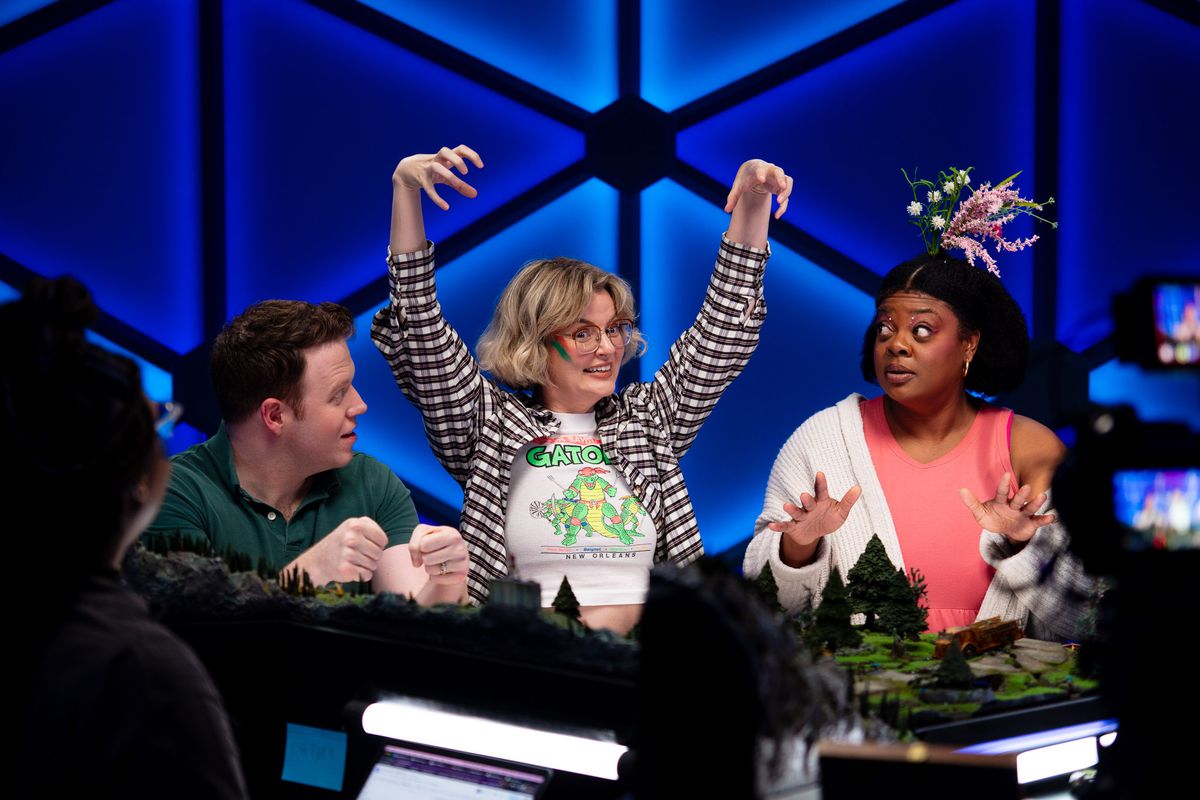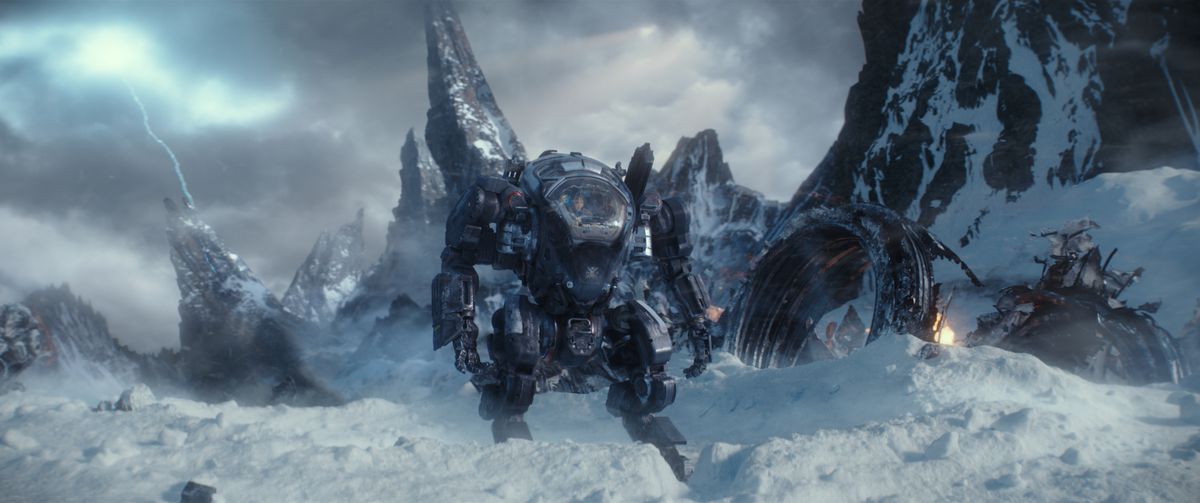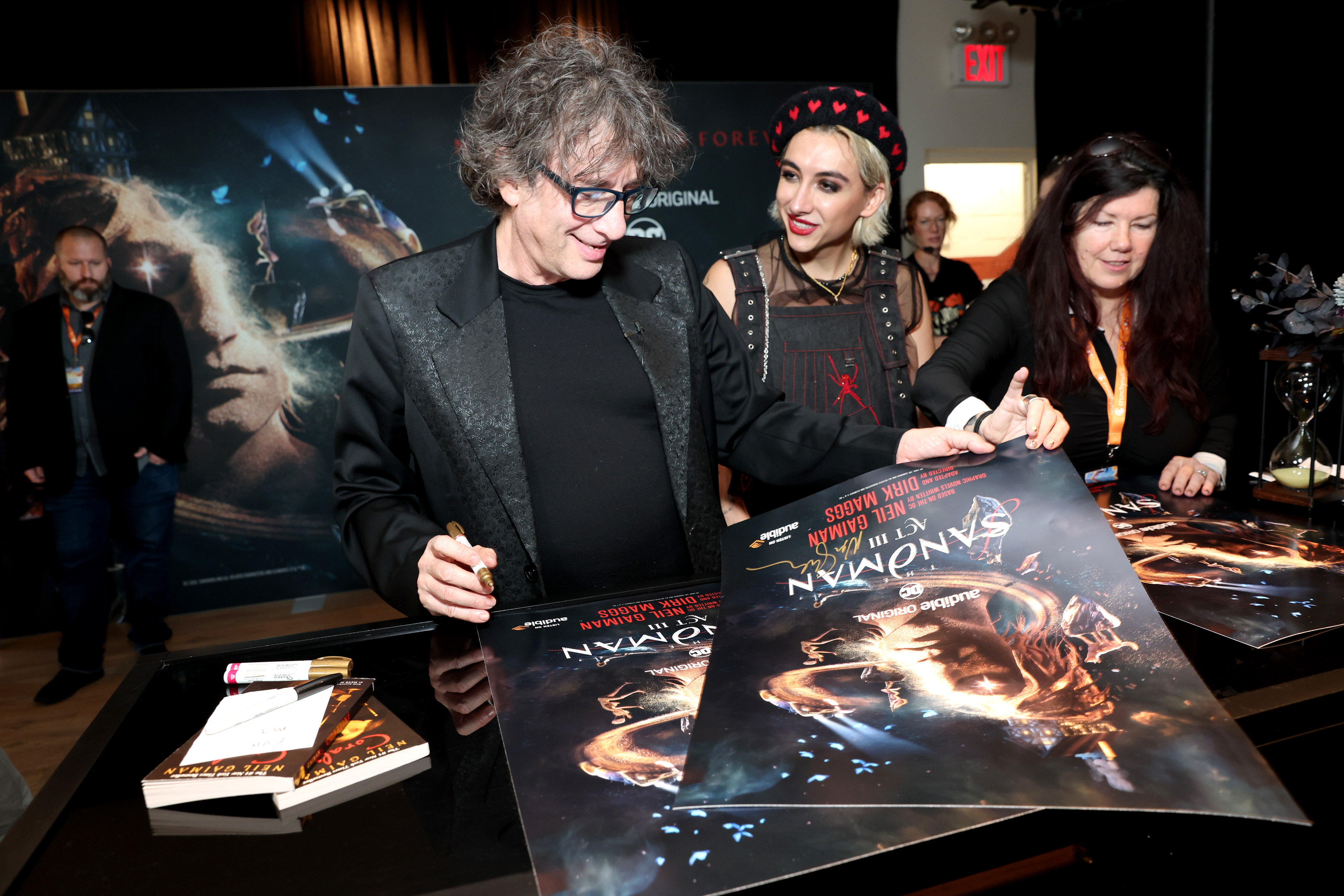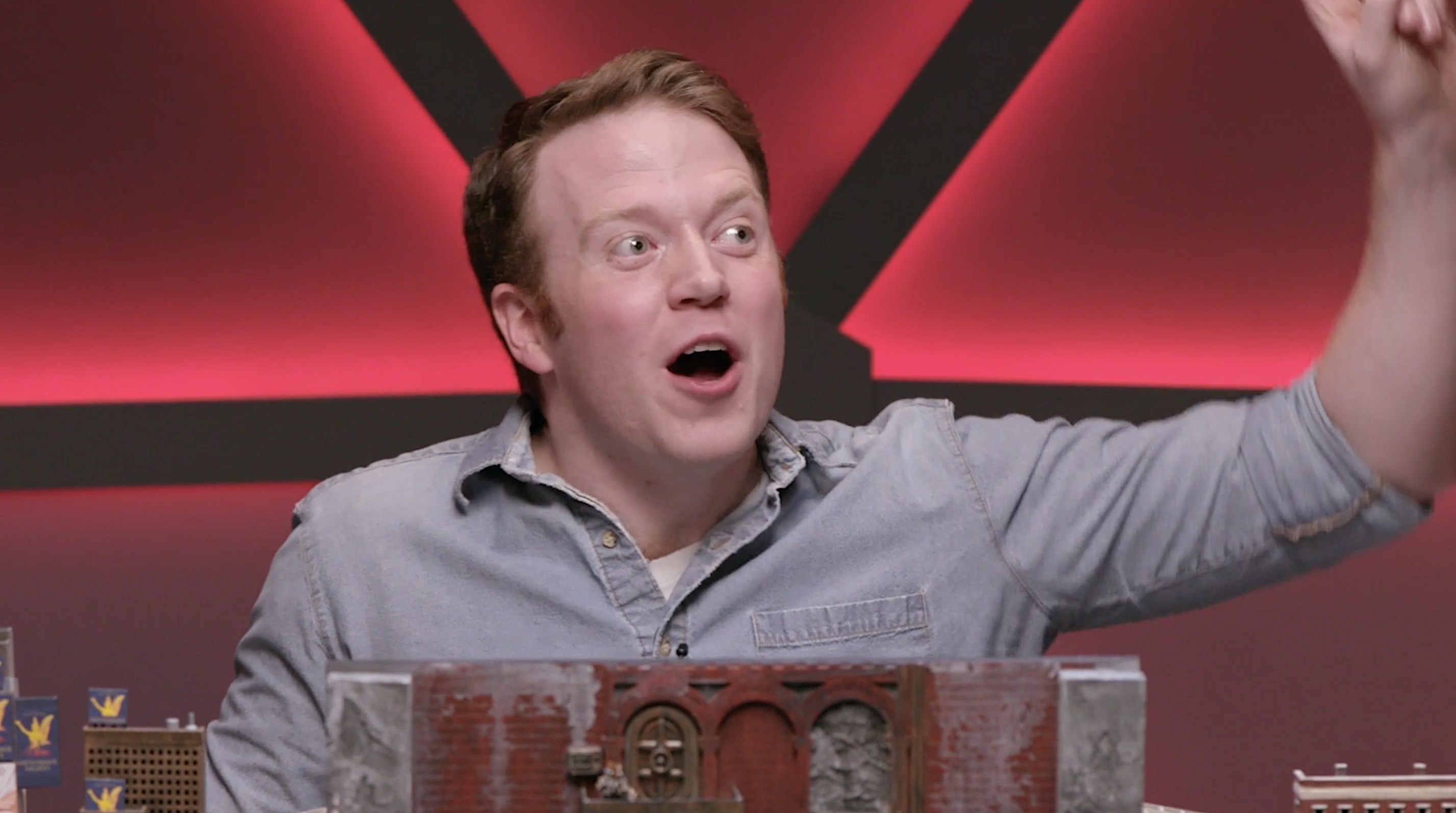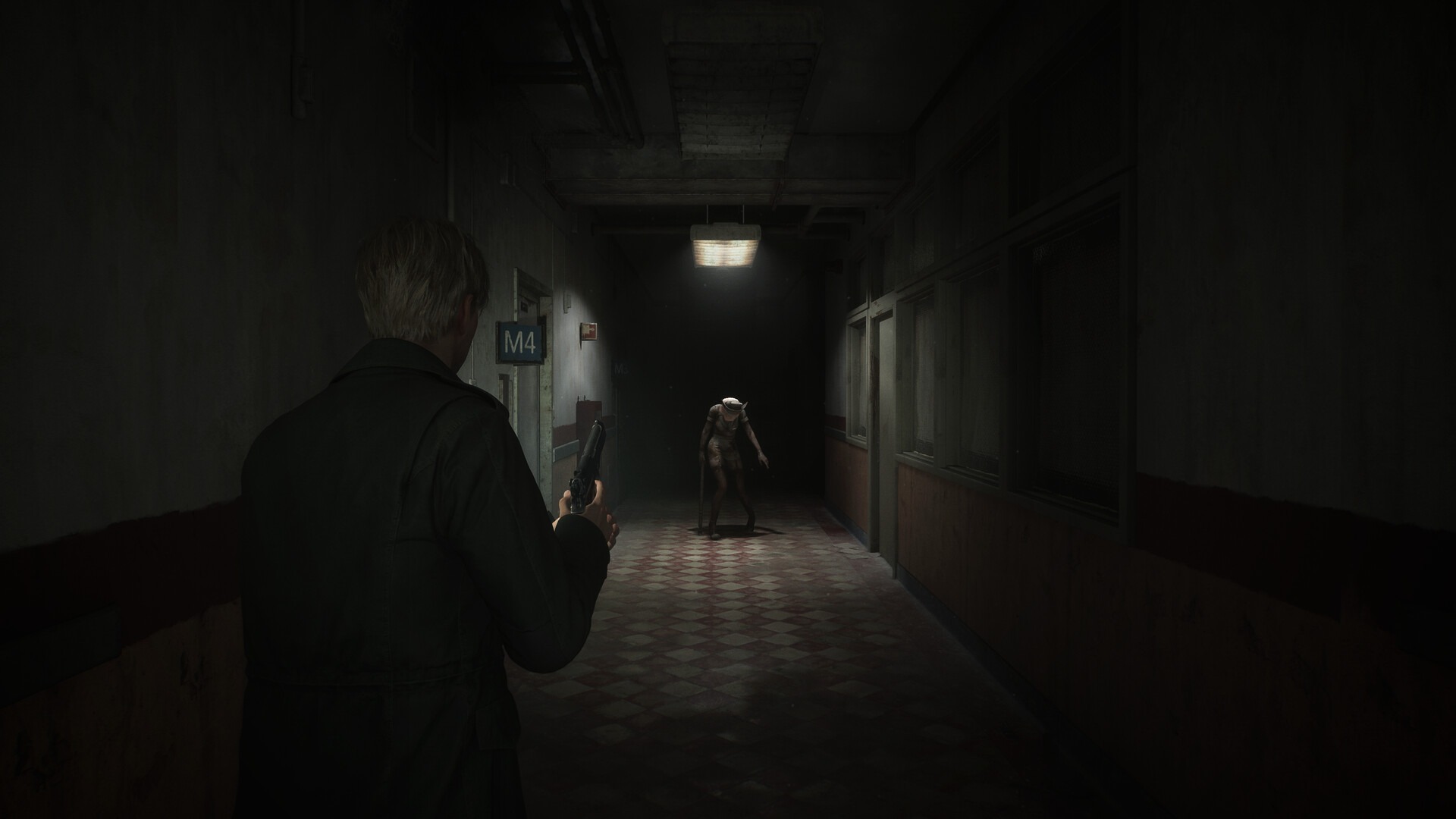From the moment Zack Snyder’s ambitious Netflix space opera Rebel Moon was first announced, one aspect of its backstory has earned more attention than anything else: The film began as a Star Wars pitch.
“I remember calling Zack at some point 15 years ago,” producer Eric Newman said at a splashy Hollywood Hills preview event for the film. Newman previously worked with Snyder on Dawn of the Dead. “He was talking about a ‘Seven Jedi’ movie in the Star Wars universe.”
The idea of making a Star Wars movie based on Akira Kurosawa’s Seven Samurai almost seems circular: That movie, which has been remade and reimagined dozens of times over, as everything from the 1960 Western The Magnificent Seven to Pixar’s A Bug’s Life, was a major influence on George Lucas. But the pitch, which eventually made its way to Lucasfilm, was never developed for many reasons, one being Disney’s acquisition of Lucasfilm in 2012 and that brass’ approach to the franchise.
The theatrical Star Wars movies have largely revolved around legacy characters, but Snyder’s plan involved an entirely fresh cast, with no relationships to past Star Wars protagonists. When Lucasfilm’s plan for the sequel trilogy fell into place, Snyder’s movie disappeared from any future planning boards. But that may be for the better.
“I never wanted it to be [a Star Wars movie], because your hands are tied to the IP,” Deborah Snyder said at the event. She’s a longtime producer of her husband’s movies. “I was happy it fell apart.”
:no_upscale()/cdn.vox-cdn.com/uploads/chorus_asset/file/24864569/CGA_5393_gxlIOmiR.JPG)
“Debbie said, ‘Thank God, you would’ve been so sad,’” Zack recalled. Snyder continued to stew on his story, which he says he actually thought up in a film school pitch class back in the 1980s. After Snyder’s fruitful collaboration with Netflix on the zombie movie Army of the Dead and its prequel, Army of Thieves, Snyder decided it was time to develop his old Star Wars idea into an original adventure for the streamer.
That Tuesday, far away from the picket lines outside of Netflix, reporters gathered inside the private theater of a nearly $10 million home to get a first look at the trailer for Snyder’s new epic, which is meant to be a two-part movie project that will also expand into a massive video game.
It was a “universe of Rebel Moon trailer” for both parts that made it clear that Snyder is going bigger than he’s ever gone before. Even his four-hour version of Justice League pales in comparison. Long gone are the days of developing a DC galactic showdown between gods among men. Snyder is attempting to create, in his own words, “a new universe.” That phrasing feels pointed, and the marketing plan feels direct: Zack Snyder wants to kickstart a post-Star Wars era for big-screen space opera.
Two key events converged in 2017 to make this project happen: Snyder’s firing from Justice League, and the fervent, vitriolic fan reaction to Rian Johnson’s risk-embracing Star Wars: The Last Jedi.
:no_upscale()/cdn.vox-cdn.com/uploads/chorus_asset/file/24864604/mx0890_v1000002.1220_R_CC.jpg)
After DC’s separation from Snyder, the company flailed through different philosophical approaches to its cinematic universe, alternately promising a more cohesive MCU-style single storyline and, with the success of 2019’s Joker, more stand-alone movies taking place in their own universes. Meanwhile, Star Wars movies kept failing either at the box office or with critics and fans. The time seems ripe for more movies that don’t come with the weight of all that IP — like The Creator, an upcoming original sci-fi movie from Rogue One: A Star Wars Story director Gareth Edwards. Blink and you might confuse frames from The Creator trailer for those in a galaxy far, far away.
“I hadn’t really thought about that,” Snyder said about the connection between Rebel Moon and The Creator, two original sci-fi worlds from filmmakers with vested interests in Star Wars. “It’s kind of what Debbie said about struggling and being hitched to IP you don’t really control. The difficulties associated with pushing a vision through that is controversial.”
Edwards reportedly faced a great deal of studio interference on Rogue One, much like Snyder faced with the multiple cuts of Batman v Superman: Dawn of Justice and Justice League. But Snyder’s story is more extensive and complicated, with competing stories about why and when he departed Justice League, followed by a dramatic return to finish his final cut.
“I can’t believe we got Justice League made,” Deborah said. “Nobody can,” Zack answered. But his cut of the movie ends with the promise of a grand battle that will never come. So far, Snyder’s hopes of creating a generation-defining franchise are still unfulfilled.
Is Rebel Moon that franchise? The lead-up to the film has seemed like he wants to have his IP cake and eat it, too. The trailer and press images released for the film openly invoke Star Wars, weaponizing Star Wars language and iconography, while emphasizing that this story never would’ve worked in Star Wars form.
“This is a culmination of all that we’ve done with storytelling, franchise-telling, world-building,” said producer Wesley Coller, who has collaborated on Snyder’s projects all the way back to his days of shooting commercials.
:no_upscale()/cdn.vox-cdn.com/uploads/chorus_asset/file/24864611/RBM_20220712_26463_R3.jpg)
“He has a way bigger universe in mind, even beyond the first two films,” Newman explained. “World creation is a really hard thing. There are a very small handful of filmmakers who could pull it off.”
“More on this movie than others, I did more drawings,” Snyder revealed, explaining that he’d produced somewhere between 3,000 and 4,000 pieces of art for the franchise over the span of four or five months.
The tone of the preview event frequently tipped in one direction: Rebel Moon is a rebuff of many things that have gone right and many things that have gone wrong in Snyder’s career. Star Wars is the holy grail of many filmmakers who grew up in the ’70s and ’80s, but with Disney taking that franchise in its own direction, Snyder is ready for something of his own.
The need for original streaming content led to the release of his definitive Justice League. Now, he isn’t wholly invested in the traditional cinematic experience for Rebel Moon. “With this, I was not super interested in a theatrical release, especially with the PG-13 versus extended cuts,” Snyder said. “I feel like with the theatrical release, the way the model is, it takes some energy out of it.”
Both parts of Rebel Moon are getting R-rated extended cuts, which will be more than 30 minutes longer than the films. But he didn’t have to fight anyone to get those cuts made. “My big fans would say, ‘Why are they fucking with you? Just do [the extended cuts],’” he laughed. “In the initial conversations with Netflix, they made it a part of the plan.”
Control is the theme of Snyder’s career. “I can’t help myself,” he admitted. “I was always inspired by movies like Brazil. There’s a great history of director’s cuts. It’s like another movie to discover. There’s this other tug, rabbit holes, it’s amazing. For me, with my drawings, there ends up being a lot of that to tell a deeper-dive story. With director’s cuts I’ve done in the past, in a vacuum, it’s how the movie would exist. It’s part of my relationship with fans.”
It’s subtextual or at least unclear, though, whether Snyder has actually had to compromise with Rebel Moon. His original script was 172 pages long, and Netflix film chairman Scott Stuber balked at a potential three-hour run time. Instead of whittling the story down to a Netflix-preferred two hours, Snyder decided to split it in two.
:no_upscale()/cdn.vox-cdn.com/uploads/chorus_asset/file/24864633/mx0810_v1000018.1001_R3.jpg)
When he spoke about designing the films for a streaming audience, he sounded a lot like Ghosted director Dexter Fletcher, talking about an opening sequence he axed for fear that Apple TV Plus watchers would become bored after a few minutes without action and turn the movie off. “When you come out of the gate in a streaming movie, you have to be careful not to be too intense or too boring,” Snyder explained. “I always was a huge advocate of having the opening of a movie come at you hard. […] I think it makes you better.”
But the big question remains: Will it all work? Will Zack Snyder shepherd the next Star Wars into this world via Netflix? During the explosion of social media and the “democratization” — a corporate-favorite word — of access to art and platforms to talk about art, viewers’ relationships with movies have fundamentally changed. There may never be another Star Wars, simply because it’s impossible to recreate such a phenomenon in today’s cinematic ecosystem.
And with the cloud of secrecy that streamers place over true viewership numbers — a point of clear and essential debate in both the ongoing WGA and SAG-AFTRA strikes relating to a number of issues, such as residuals — it may be impossible to tell whether Rebel Moon finds grand success. Is that why Snyder and company are de-emphasizing the idea of a theatrical release? Unless you’re James Cameron, the history of original galactic-scale sci-fi at the box office isn’t pretty.
For now, however, the Rebel Moon machine is running full steam ahead. Reportedly the real “rebel moon” isn’t the moon in either part 1 or part 2 — it’s something that would emerge in a proposed third film, or even a project beyond that.
“If I ended up having to make a few more [Rebel Moons], I’d be fine with that,” he said. Whether he gets there will solidify the story of Snyder’s career, and could help resolve where Hollywood — and epic-scale space opera that isn’t full of droids and Wookiees — stands in this new age.
Rebel Moon Part 1: A Child of Fire is scheduled for release on Netflix on Dec. 22, with Part 2: The Scargiver scheduled for April 19, 2024.

